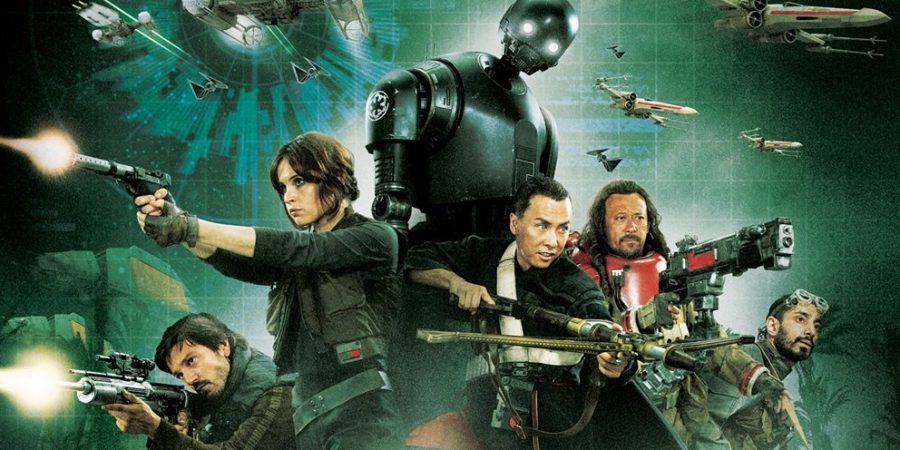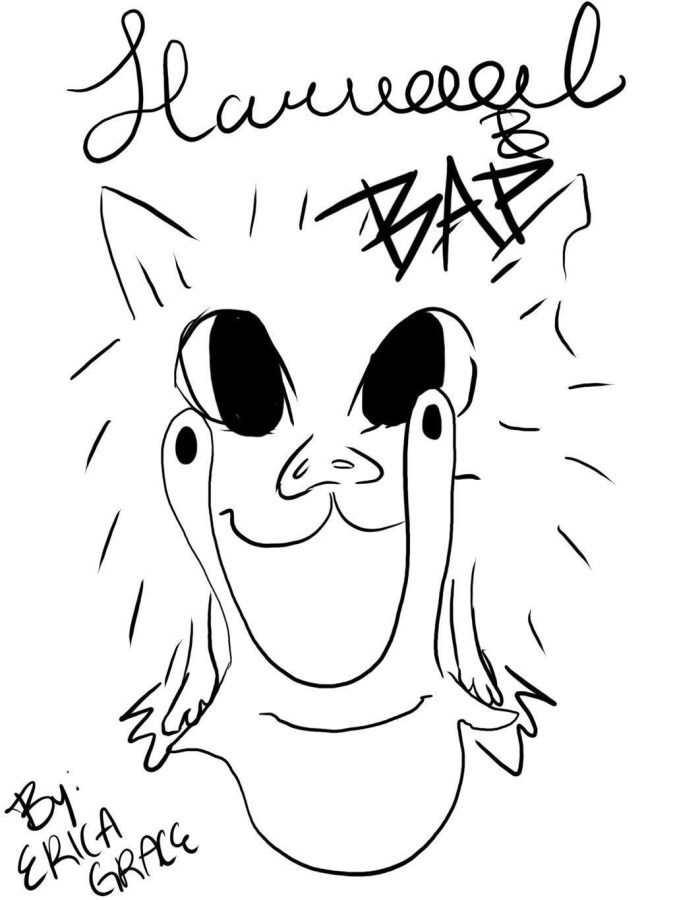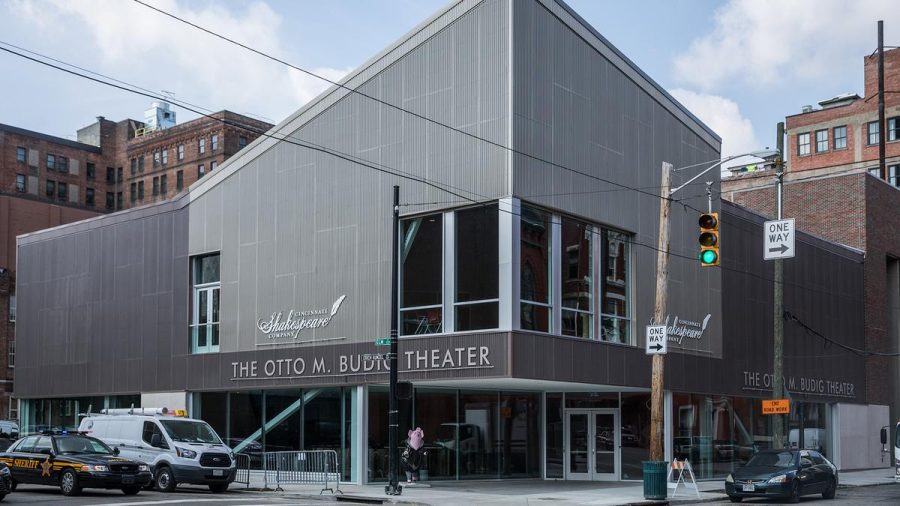By Haley Vaughan ’18, Contributor
A long time ago in a galaxy far far away…
(If you don’t want spoilers, this is not the review you are looking for.)
Some are calling it the best Star Wars movie ever. In my opinion, it’s the best one since the original trilogy. And that includes The Force Awakens. In fact, it might be even better than Episode VI: Return of the Jedi. Some of you may cry: Heresy! How could some anthology film be better than watching the fall of the Empire and Anakin Skywalker’s redemption? I would respond with a simple answer: grit.
Rogue One is the darkest Star Wars movie yet. Yes, even compared to Episode III: Revenge of the Sith. It plays more like a war film than any film in the Star Wars universe. In the third act, when the rebels attempt to steal the Death Star plans from Scariff, if you take out the blasters, insert machine guns, and throw in some blood, one could easily believe they were watching a WWII film. But the movie is dark for other reasons. Unlike Luke, Leia, and Han, the characters in Rogue One are not the clean cut ones we’ve grown accustomed to seeing in a Star Wars film. For example, Cassian Andor, portrayed by the fantastic Diego Luna, a Rebel Intelligence Officer, (my favorite character from the film) shoots one of his informants in the back because they were about to be cornered by Storm Troopers. The only way out was to climb and his informant had a broken arm. Rather than allowing him to be captured, Cassian pretends to comfort him and then kills him. In his mind, it was better to be dead than to allow the Empire to find out the rebels knew about something called a planet killer (later revealed to be the Death Star.) Episode IV: A New Hope’s Catina scene sparked endless debate about whether Han shot first when confronted by a bounty hunter. But there’s no debate here; Cassian Andor is our first introduction to the morally grey side of the rebellion.
And Cassian isn’t the only example. Jyn Erso, the main character of the film, played brilliantly by Felicity Jones, is no goody-two-shoes. Her first scene as a grown woman is inside an Imperial prison cell. Even after the rebels break her out, she has no wish to take part in the rebellion. Jyn is no Leia; in fact, Jyn is more like Han Solo. She looks out only for herself, unlike Leia who gave everything for her cause. It isn’t until after her father Galen (Mads Mikkelsen), who was the lead engineer of the Death Star, dies, that her faith to the rebel cause is cemented.
Rogue One is truly an ensemble film. Cassian and Jyn are the leads, but the other characters aren’t shunted aside. Bodhi Rook (Riz Ahmed) an Imperial pilot who defected, Chirrut Îmwe (Donnie Yen) a blind warrior who believes in the force, Baze Malbus (Jiang Wen), Chirrut’s companion and fierce warrior with a big gun, and the Imperial droid K2-SO (Alan Tudyk), whose dry sense of humor and dead pan humor adds a levity to an otherwise slightly depressing film, are all characters the audience grows to love. Of course it would be remiss of me not to mention the incredible villains Rogue One presents the audience with. Two are original characters: Darth Vader and Governor Tarkin, who was brought back to the silver screen through an unbelievably realistic use of CGI; Peter Cushing, the actor who played Tarkin, died in 1994. The original character of Director Orson Krennic (Ben Mendelsohn) adds a depth to the Empire in the way Cassian adds depth to the Rebel Alliance. He is the Director of Advanced Weapons Research for the Imperial Military and struggles to keep control of the Death Star and his head engineer Galen Erso. The power struggle between Krennic and Tarkin gives the audience a glance into the inner workings of the Empire.
Rogue One’s decision to kill all of its main characters is perhaps the best part of the entire film. The whole third act of the film is dedicated to showing what it took to get the plans for the Death Star. Provided one has seen A New Hope, it’s already known that the plans are obtained. What isn’t known is how the rebels aquired them, the number of lives lost, and how close the rebels came to failing. We as an audience have grown accustomed to things always working out for the main protagonists, but as the third act wears on, we watch more and more of the characters we’d grown to know die. K2-SO is shot to pieces, Bodhi blown up with his ship, Chirrut killed by an explosion, and Baze destroyed by a death trooper (a special kind of storm trooper.) We begin to question whether anybody would get off of Scariff. Jyn is able to transmit the Death Star plans through to the Rebel Alliance after Cassian, who had supposedly fallen to his death earlier, saves her from Orson Krennic. We, as an audience, now assume that somehow, miraculously, Jyn and Cassian will be rescued and escape on a ship. But then the Death Star appears. The people in the theater next to me audibly gasped when it appeared on the horizon. We realize it is too late for our heroes. Thus, the most heart breaking scene of the whole film (and that’s saying something) begins. Jyn and Cassian, who is gravely wounded from his fall and blaster shots he took, stumble down to the beach. Cassian’s line: “Do you- do you think anybody’s listening?” feels like a punch to the gut. Even after all they’d been through, the rebels on Scariff still have no idea if the plans had reached the Alliance. They can only hope. The last we see of Cassian and Jyn is them hugging tightly as a blinding, blistering, light surges forward until the screen is white.
This devastating end to our main characters leads us into the final minutes of the film. Rebels on a ship are seen frantically downloading the plans onto a card. Just as it completes and they are preparing to leave, the door jams and we hear the sound of a lightsaber igniting. Darth Vader has arrived. Without uttering a word he mows down a whole corridor of rebels. This is the first time Star Wars fans really see what Vader is capable of. And it is terrifying. A rebel frantically slips the plans through a crack in the door just before he is impaled by Vader’s saber. While Vader is distracted, Tantive IV, the ship from A New Hope’s first scene where Leia gives the plans to R2-D2 and is then captured, is able to launch. The film cuts to scrambling rebels who deliver the plans to a general who then proceeds to deliver them to Princess Leia. Yes– young Leia, and she looks just like 19 year old Carrie Fisher did. The magic of CGI strikes again. When asked what it is the rebels brought her she responds with a single word. Hope. That is the theme running throughout Rogue One: Cassian states that “rebellions are built on hope”, Cassian and Jyn die with the hope they succeeded, and Leia declares that the rebels have brought hope. It’s only fitting that the next film is called A New Hope.
Rogue One was the right way to do a prequel. It expanded on a smaller part of the original trilogy, introduced appealing characters, filled plot holes, and made the overall experience of Star Wars better. We’re only left with one question: What order do we watch the films in?






